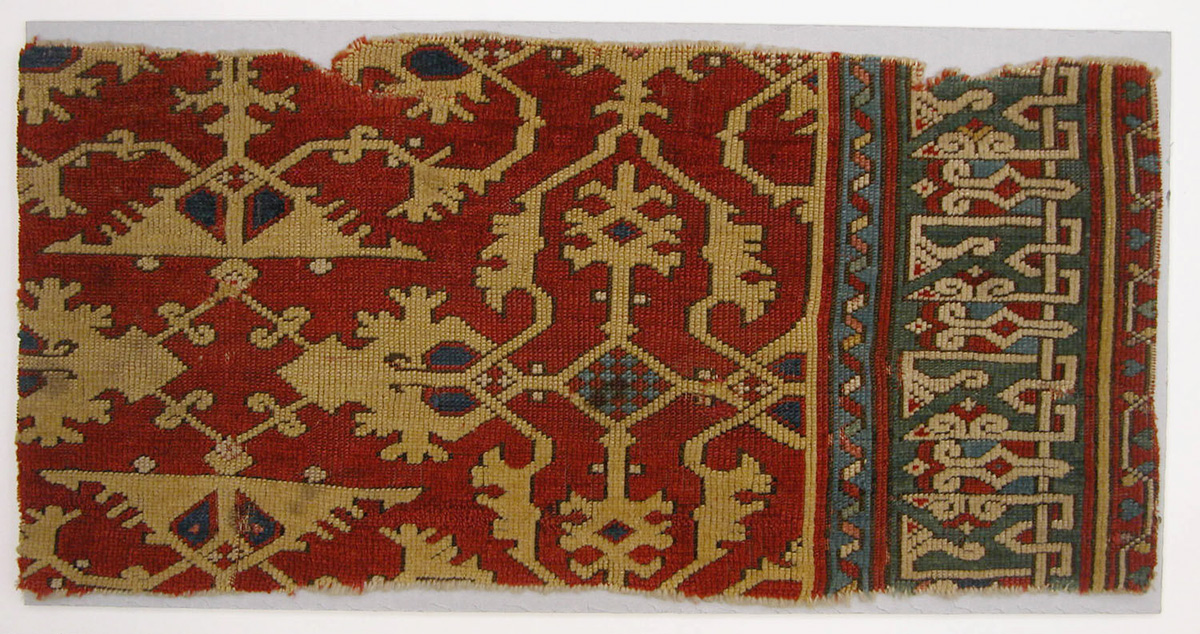|
Anatolian "Lotto" rug fragment, Western Turkey, probably Ushak
Region, late 15th - early 16th century. The Metropolitan Museum of Art, New
York (Joseph V. McMullan
Collection)
Date:probably late 15th–early 16th century
Medium:Wool (warp, weft and pile); symmetrically
knotted pile
Dimensions:Rug: L. 13 1/2 in. (34.3 cm)
W. 27 in. (68.6 cm)
Credit Line:Gift of Joseph V. McMullan, 1972
Accession Number:1972.80.6
Not on view
Carpets displaying this
striking design of stylized vegetal arabesques in yellow on a red ground
are often called "Lotto" carpets after a famous altarpiece by Italian
Renaissance painter Lorenzo Lotto that depicts a similar carpet. While the
earliest examples of carpets using this design probably date from before
1500, the design remained popular for several centuries, and large numbers
were exported to Europe, where they frequently appeared in paintings.
Early examples of Lotto carpets exhibit pseudo-calligraphic borders like
the one seen here. Thought to derive from a rectilinear form of Arabic
script known as kufic, this type of interlaced border is characteristic of
many early Turkish carpets.
Catalogue Entry
Belonging to the same
family as the ‘Holbein’ rugs, the pattern of this fragment from a
masterfully designed carpet is of an entirely different nature. The type
is usually identified as a ‘Lotto’ design, again after the 16th century
Venetian master, Lorenzo Lotto.
Instead of the ‘Holbein’
octagons, we find here an open design of continuously alternating rows of
octagonal and cross-shaped forms created entirely from palmette leaves in
yellow, set against the red of the ground.
In harmony with the
‘Holbeins’, the ‘Lotto’ rugs use the same Kufic border design. In this
fragment the earlier type of Kufic border is used following still closely
the forms of actual Arabic writing. It is from such forms that the purely
linear decorative pattern of the later ‘Holbein’ rugs is derived.
[Arts Council 1972]
Provenance
Joseph V. McMullan, New York (by 1965–72; gifted
to MMA)
|

